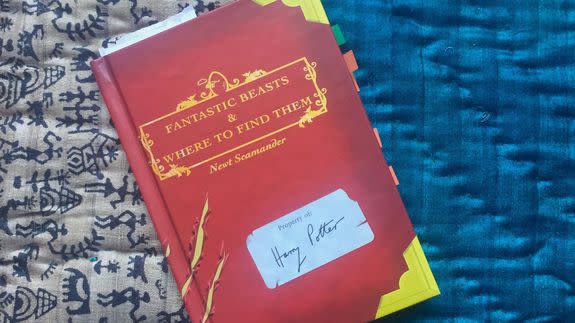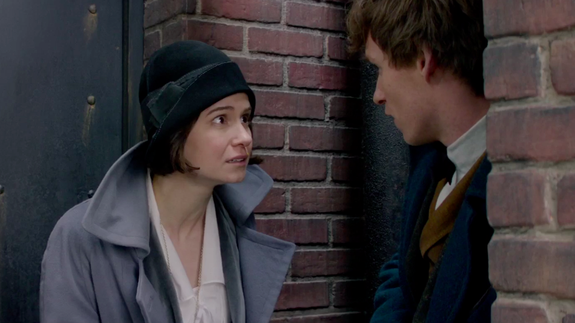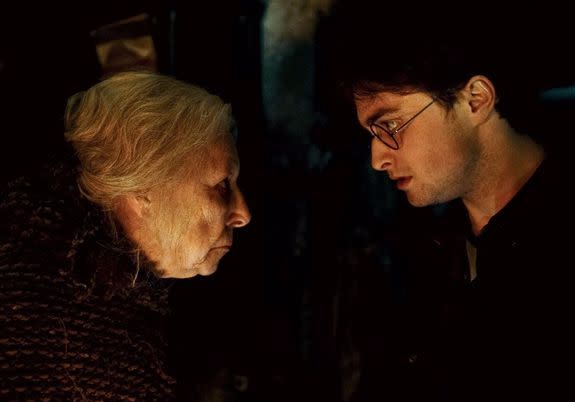7 magical things you forgot from the 'Fantastic Beasts' Harry Potter textbook

It seemed crazy once upon a time that the 759-page Harry Potter and the Deathly Hallows would be split into two movies. Years later, the positively dainty Potter companion textbook Fantastic Beasts and Where to Find Them became not one, not three, but five movies, the first of which is finally arriving on Nov. 18.
J.K. Rowling published Fantastic Beasts and Where to Find Them and Quidditch Through the Ages in a box set released by Scholastic and Bloomsbury in 2001 (the same year the the first movie premiered — between books Goblet of Fire and Order of the Phoenix). All proceeds went to Comic Relief.
With less than a week until Fantastic Beasts hits theaters, Mashable decided to go back to the source and do our Hogwarts summer reading before heading to the movies.
SEE ALSO: 'Fantastic Beasts' soundtrack will make you say 'Yes, this is the sound of magic'
The book contains a foreword by Albus Dumbledore and an introduction by the author himself, Newt Scamander. What follows is a catalog of magical creatures, but the material also provides plenty of fodder for speculation — one thing Potter fans can't get enough of.
1. Newt's time in America is mysteriously missing
The "About the Author" section of Fantastic Beasts makes no mention of Newt Scamander's stint across the pond — we don't know whether it was forgotten or expunged from British wizarding history.
Or, you know, maybe J.K. Rowling just hadn't thought of it yet.
2. Hagrid 1.0
Speaking of things J.K. Rowling hadn't thought of, the Fantastic Beasts introduction explicitly states that its author graduated from Hogwarts — but we've since learned that he was expelled for introducing a magical beast into a setting where it endangered human lives.
3. Shipping is about the journey

Image: warner bros.
Newt's biography in Fantastic Beasts does mention that he lives in Dorset with his wife Porpentina, A.K.A. Tina Goldstein (Katherine Waterston), who he'll meet in the first film. Also, they have pet kneazles, which are the most adorable — if chaotic — creatures promised in the film's menagerie.
4. A hint at the five movies
In the introduction, Newt declares that Fantastic Beasts and Where to Find Them "represents the fruit of many years' travel and research" in a hundred countries and across five continents. That's also the same number of continents as have magical communities big enough to merit a school (if you're keeping track with Pottermore), which presents a thrilling opportunity to look at international wizardry over the five-film franchise.
5. The Bathilda Bagshot link

Image: warner bros.
Bathilda Bagshot was first introduced in the Harry Potter series as the author of A History of Magic, a quintessential text in the Hogwarts curriculum. In Deathly Hallows, we learn that she knew Dumbledore's family closely and introduced him to her great-nephew: Gellert Grindelwald.
We know Grindelwald will be a key player in the Fantastic Beasts films, and that Newt knew Albus Dumbledore. He cites Bagshot several times in the Fantastic Beasts introduction and A History of Magic came out 20 years later — what other history did Bathilda witness in those years?
6. Clause 73 of the International Code of Wizarding Secrecy
So that's why the MACUSA is so terrified by Newt's escaped magical creatures! Well, that and the fact that American wizards are far more secretive and fearful at this time than British ones, and the fact that some of the creatures are legitimately dangerous and life-threatening.
The paragraph that follows acknowledges "occasional breaches of Clause 73" while hilariously omitting Newt's own turbulent past with it — again, this is because Rowling published Fantastic Beasts in 2001, but the thought of an adult Newt Scamander firmly looking in the other direction when asked about his trip to New York is kind of hilarious.
7. Disillusionment Charms
Remember these? Mad-Eye Moody used one to conceal Harry from sight in the third chapter of Order of the Phoenix, but Rowling snuck them into Fantastic Beasts two years before that. Scamander's introduction describes the charm as a measure to distort the vision of Muggles so they don't spot magical creatures (or, you know, Harry Potter).
They're also highly similar to how the Demiguise camouflages itself in the wild...which may or may not come up in the film.
